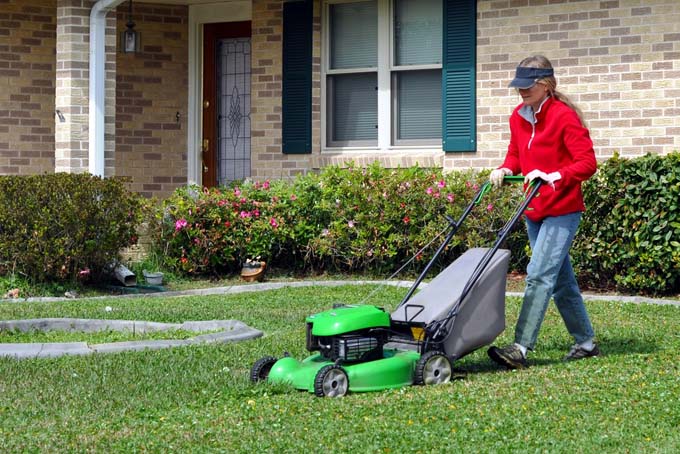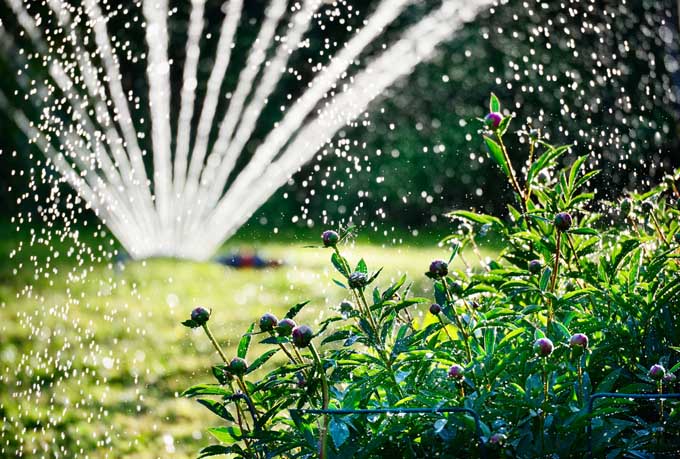While few of us have that perfectly green turf, there are some simple things we can do to achieve that nice layer of grass! From seeding to mowing and watering, read on for some great lawn tips!
Seeding
Seeding should be done in a cool time of the year. The preferred time is in the early fall. Seeding in the cool of late summer and early fall will allow the seed to germinate and begin growth. If you seed in the heat of summer the seed will burn and dry out and have a very hard time germinating. Be sure to choose a cultivator that is compatible with your growing conditions. If you are seeding in full sun, choose products designed for full sun, and likewise for shady spots. Prepare the site by raking or tilling the soil so the ground is nice and loose. This will help the seed to fall on gentle ground that will provide a stable growing surface. Rake lightly after seeding so that the seed will be incorporated into the soil. Be sure to keep your ground moist so that the seeds can germinate fully and have enough moisture to begin growing.
Mowing
Mowing your grass is the most important thing you can do to maintain a beautiful lawn. You should mow at least once a week, but never cut more than one third of the grass length down. So if your sod is 3 inches tall, only mow down to 2 inches. Many people think they can mow shorter so that they will not have to repeat the task as soon, but this just stresses out the grass which causes the lawn to suffer. When the grass is cut severely, it just grows faster to replenish what has been cut. Taller grass will hide problem spots that will be very obvious in shortly cut lawns. The longer grass will also provide more shade to the roots which will hold water in the soil and help to keep the roots cool. Longer grass will also choke out the weeds more efficiently that short grass. It is also a good idea to mow in a different pattern with each cutting. This will cut the blades on a different side each time and access more weeds by the rotation.
Mulch Clippings
Another great mowing tip is to mulch your grass clippings. Many people think they should bag or rake the clippings after they mow, but leaving them to fall back to the ground will add nitrogen back to the ground and provide extra moisture control measures. Earthworms love the freshly cut clippings, and earthworms can be a gardeners best asset! Leaving the clippings will not cause thatch. Thatch is caused by the use of chemicals on your lawn which destroy the natural organisms needed to breakdown the clippings.
Aerating
It is also a great idea to aerate your turf. Aerating your lawn every few years is enough, but this practice will help the soil to break down and allow water and other nutrients to penetrate deep into the root areas. Almost every yard and garden center should have an aerator that you can rent for a night to get the job done. This will also help break down thatch that has built up throughout your sod.
Watering
If you choose to water your lawn, be sure to do it in the early morning. If you water in the evening, the grass and soil will remain wet throughout the night which creates a breeding zone for bacteria and other lawn diseases. Don’t water in the heat of the day as much of the water will be lost through evaporation. Generally your yard needs one inch of rain per week, so if you have a week where it is dry and hasn’t rained that much, try soaking the lawn one morning to make up for the lack of rain.
Weeding
One last tip is to take weeds in their simplicity. No turf can ever be weed free, and you may not want it to be anyway. Weeds provide beneficial nutrients to the lawn as well as control many insects that may attack your grass. Some traditional “weeds” are actually legumes and facilitate the natural application of nitrogen back into the soil – this includes dandelions and all forms of clover. Apply herbicides when you feel it is necessary (I don’t), but remember that whatever you place on your sod will eventually run off into our creeks and streams and will affect the wildlife around you. These are some great tips for your lawn care, follow the one-third rule of mowing, water in the early morning, and mulch your clippings. Following these simple tips will help your yard to be looking denser and a deep green in no time! Why not check out these guides with further lawn care information:
11 Winter Lawn Care Essentials How To Repair A Bald Spot in Your Lawn Why and How You Should Lime Your Lawn and Garden
© Ask the Experts, LLC. ALL RIGHTS RESERVED. See our TOS for more details. Originally published September 7, 2014. [lastupdated]. Uncredited photos via Shutterstock.

